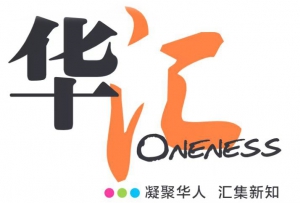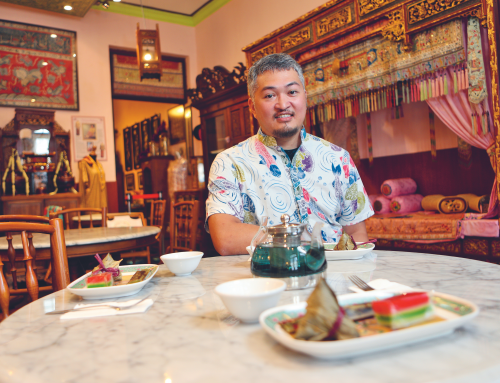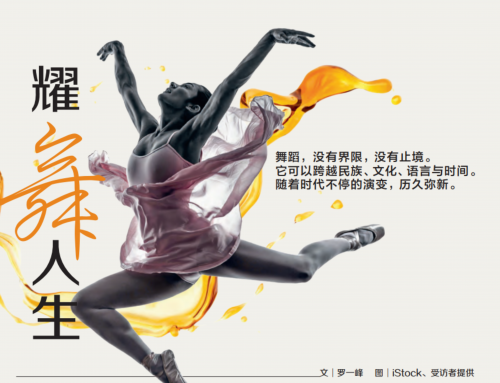印度人的手脚礼仪
文│Sukanya Pushkarna(作者是印度妇女协会前会长)
见面合掌是对灵魂致敬,鞠躬触脚为了尊重长辈?

在印度,有许多文化习俗,反映出印度人对年长者和位尊者的敬重。从见面时如何打招呼,到问候时的体态、坐姿,以至待客之道,都有讲究。
1 Namaste
这是一种双手合十的见面礼仪。无论遇到何人,都要低头垂目,并在胸前合掌。这个传统出于印度的精神信仰,即灵魂是不变的,且所有灵魂均为一体。所以当合掌并低头时,等于是“我的灵魂向你的灵魂鞠躬致意”。直至今日,印度人仍保留这个传统。
2 鞠躬触脚
遇到比自己年长的人,要恭敬地鞠躬,通常也会触摸他们的脚。年长者被视为拥有更多经验和智慧的人,因此小辈鞠躬触摸年长者的脚,以洁净对方走了更长的人生路而蒙尘的双脚。作为回报,长者会轻按小辈的头给予祝福。
这种仪式在印度不同地区有所不同。在北部,小辈通常会鞠躬并触摸年长者的脚,即使彼此间非亲非故。不过,女性的话,只有已婚妇女会摸长者的脚。在南部,男人一般会向父母或其他年长亲戚行俯卧礼,双手伸向长辈,双脚向后伸展。
3 脚往哪放?
在印度的许多地方,人们在坐下或躺下时,双脚不能朝向长辈,以示尊重。
4 不叫名字
在印度有一种迷信,如果你叫唤一个人的名字太多次,他的寿命会缩短。这似乎就是为何印度人几乎从不说出长辈的名字,妻子也不叫丈夫的名字,而几乎所有的孩子都有一个昵称,这样真正的名字就不会被“滥用”。在一些地区,新娘来到夫家后会得到一个新名字,这可能也是基于同样的信念。
5 关于烟酒
印度传统道德认为抽烟和饮酒是恶习,应该避免。也许正因如此,儿女一般不会在父母或其他长辈面前抽烟或喝酒。而中产阶级的父母,即便孩子已长大,也会避免在子女面前做反面示范。然而,这种传统已不复存在,现在两代人会经常一起聚会,一起喝酒。
6 餐桌礼仪
印度妇女的传统核心角色是在厨房里,她们会先伺候家中所有男人和孩子,之后才坐下来吃饭。这当中有几种说法,一是印度人吃饭时一般不用左手,端菜的同时还要用同一只手的手指抓饭吃,非常不便。一是地方不大,无法全家一起吃饭。随着大家庭式微,其中许多做法已成为过去。
7 盐、辣椒、腌菜
在印度一些地方,用餐时习惯把食物放在香蕉叶或其他叶片上。首先放在叶片边上的是盐、辣椒、腌菜或一片柠檬和一些甜食。这些象征着生活的各种滋味。之后,才会放上主食。
8 Atithi Devo Bhava
意思是“客人就是上帝”,这种信念标志着印度东道主的热情好客。Atithi或客人是不期而至的人,想待多久就待多久。主人必须照顾他们的需要并提供最好的住宿,同时也必须以真心对待客人。每当有客人来访,被视为幸福的时刻。
尤其在屠妖节等节日,Atithi Devo Bhava就更需要了。尽管如今多数人都会先通知后才上门,但在过去,互通信息非常困难,所以须做好随时接待客人的准备。而且上门是客,不分种姓、肤色或信仰,都须同等对待。
印度女性配饰的意涵
吉祥痣
印度女性在额头中央点的一个圆点,称为吉祥痣(bindhi)。话说在古印度雅利安人时代,男子娶妻时会用剑从新娘额上取下少许鲜血,象征新娘有成为武士之妻的勇气。虽然这个习俗已消失,但在额头留下小红点还是被视为这个古老传统的延续。红色也成了婚姻的象征。
红色象征力量,也代表爱和好兆头。传统上,红色被视为神明给予信众的祝福。不过现代印度女性,会用不同颜色的吉祥痣配衬衣服颜色。
在印度南部,女性必须点吉祥痣,而在印度其他地方,只有已婚妇才能点代表婚姻吉祥的红色吉祥痣。一些十分传统的家庭,不允许寡妇点吉祥痣。在服丧期间,家中女性也不点吉祥痣。
脚趾环
已婚妇必须戴上脚趾环,还有行走时会叮当作响的脚链。在北部,已婚妇还会在头发中央的发界涂上一种红色染料。在东部,女性会戴上红色手镯表示已婚。
鼻环
在印度,一旦出嫁就要在鼻上穿个鼻环,象征男人对她的“拥有权”。北部妇女佩戴的是金鼻环,有些鼻环还会有一条链子连到耳上,南部妇女则用小小的鼻钉代替,上面镶钻或镶金。
When you are a guest of God
In India, there are many cultural customs that reflect the respect people have for elders and dignitaries. From how to say hello to your greeting posture, sitting posture and even the way you show hospitality, they are all unique.
Namaste: This is a meeting etiquette with folded hands. No matter who you meet, you must bow your head and look down, and put your hands together in front of your chest. This tradition stems from the Indian spiritual belief that the soul is immutable and that all souls are one. So when you do this, it means “my soul bows to your soul”. Indians still keep this tradition.
Bowing and touching someone’s feet: When one meets older people, one typically bows respectfully to touch their feet. Indians regard those older as people with more experience and wisdom. Therefore, the younger generation do this to the elders, symbolically taking the dust from the feet of those who have travelled longer on the journey of life. In return, the older generation will gently touch the younger generation’s head to give their blessing. This ritual varies in different parts of India. In the north, it is common for younger people to bow and touch the feet of all older people, even if they are not related. However, for women, only those married will touch the feet of their elders. In the south, a man typically prostrates to his parents or elderly relatives, with his hands extended towards the elder and his feet stretched back.
Where do you put your feet? In many parts of the country, when sitting or lying down, people do not point their feet towards their elders as a sign of respect.
Not calling names: There is a superstition that if you call a person by his name too many times, his lifespan will be shortened. This seems to be why Indians almost never say the names of their elders. In many communities, the wife does not call the husband’s name, and almost all children have a nickname, so that the real name is not “overused”. In some regions, the bride is given a new name when she comes to her husband’s house, possibly based on the same belief.
Table manners: The traditional role of Indian women is in the kitchen, where they serve the family before eating. There are several theories. One is that Indians generally do not use their left hand when eating, and they have to use the fingers of the same hand to eat as serving the dishes, which is very inconvenient. Another reason could be that the dining space may not have been big enough for the whole family to dine together, so the women would eat later. Many no longer practice this.
Salt, pepper, pickles: In some parts, it is customary to serve food on banana leaves or plates. One would serve salt, pepper, pickles or a slice of lemon and something sweet first before the main dish. These condiments and spices symbolise the various flavours of life.
Atithi Devo Bhava means “the guest is God” and this belief signifies the hospitality of the Indian host. “Atithi” or guests who come to your home, sometimes unexpectedly, are welcome to stay as long as they want. The host must take care of their needs and provide the best possible accommodation. When a guest visits, it is regarded as a happy occasion. Especially during festivals like Deepavali, Atithi Devo Bhava is needed more. Nowadays, most people will call before coming, but in the past, sending or receiving information was very difficult, so one had to be prepared at any time.








